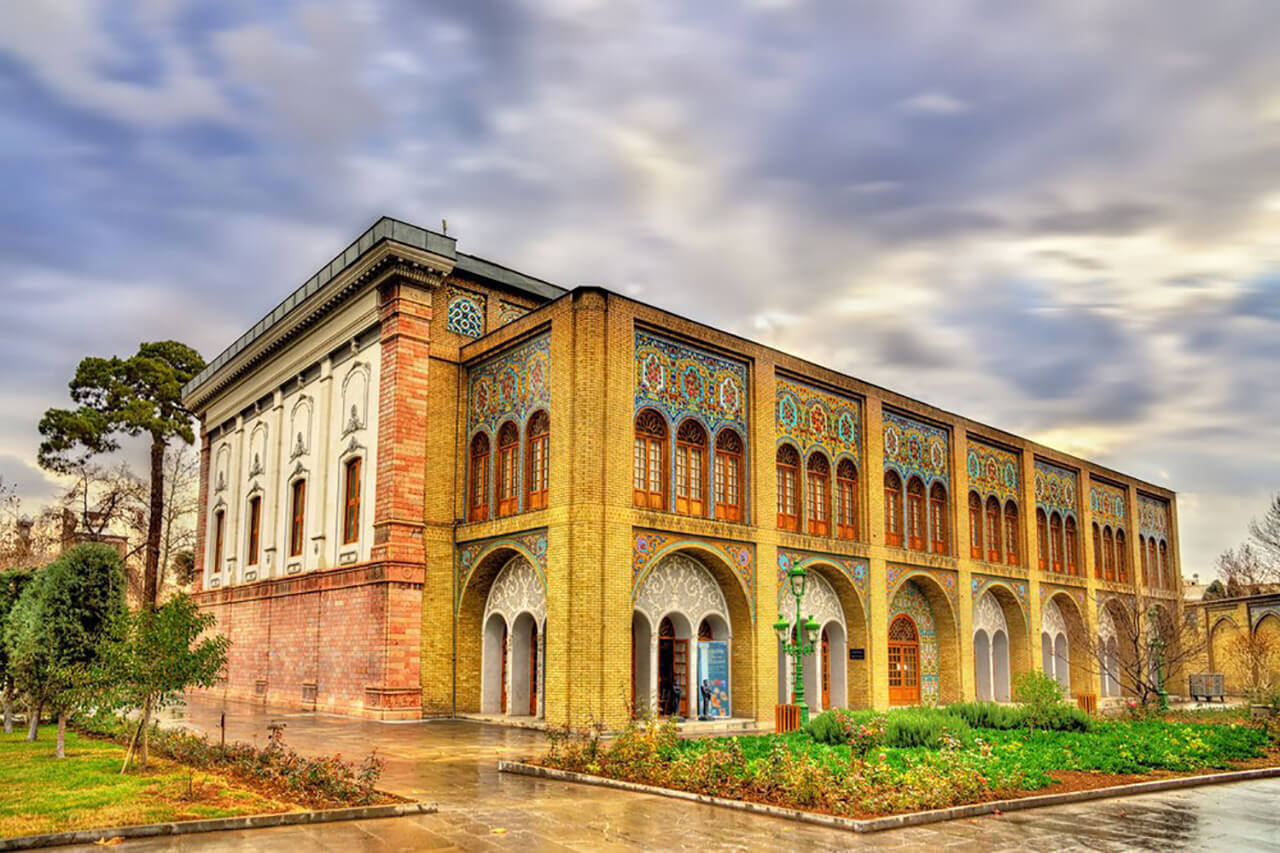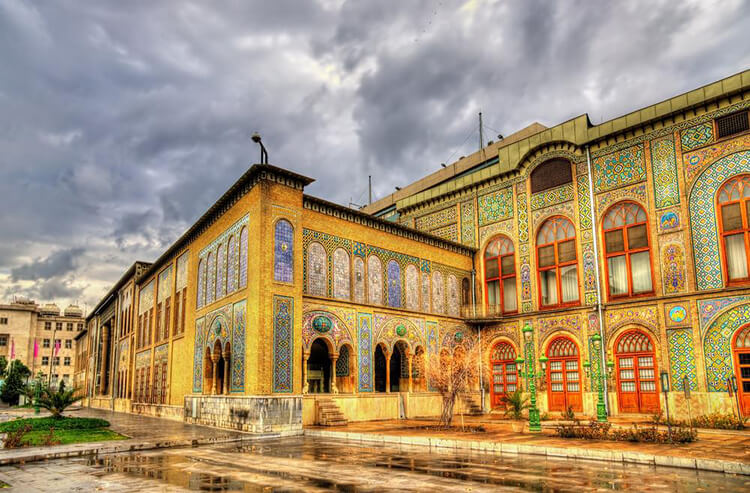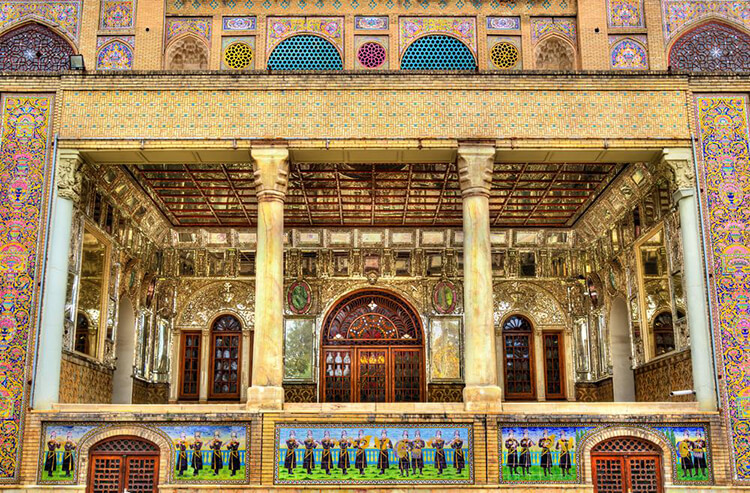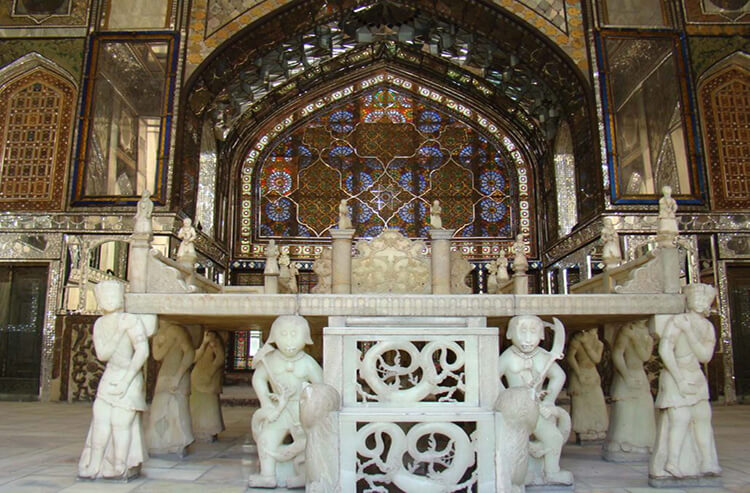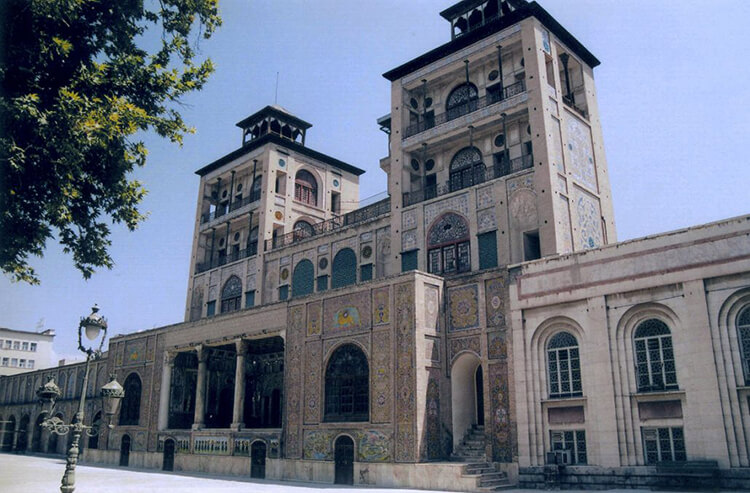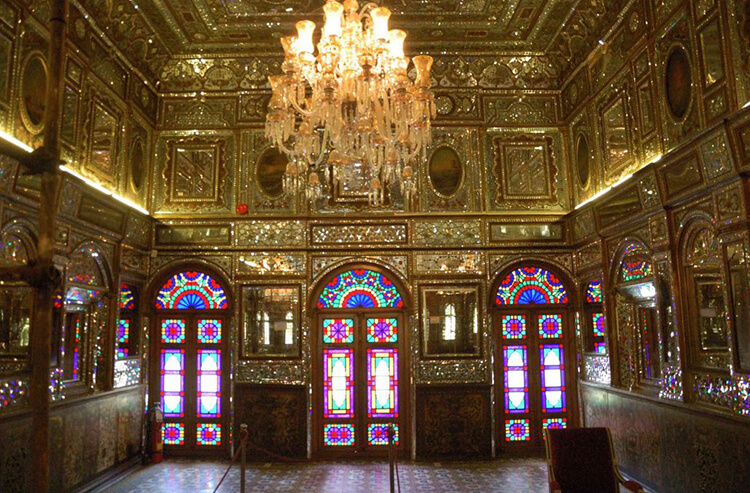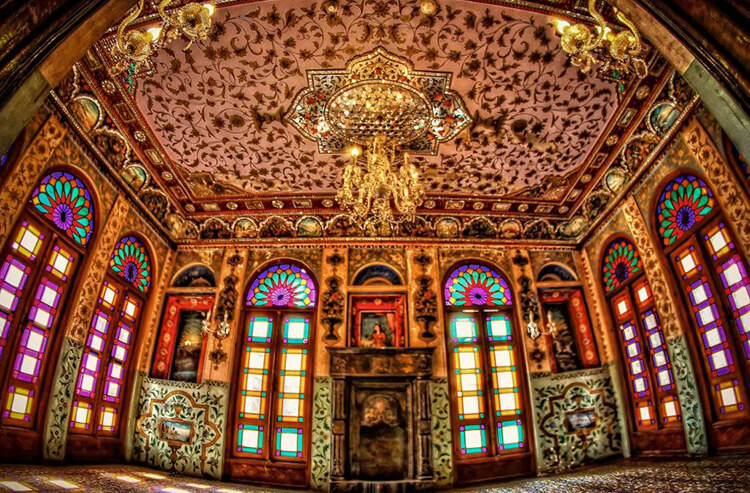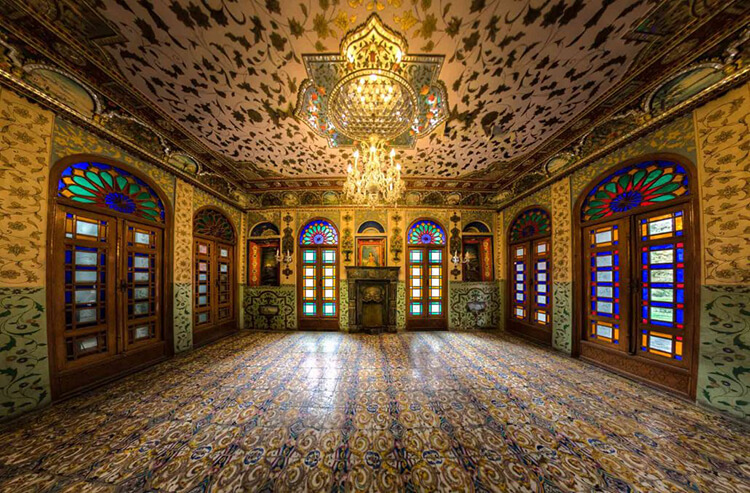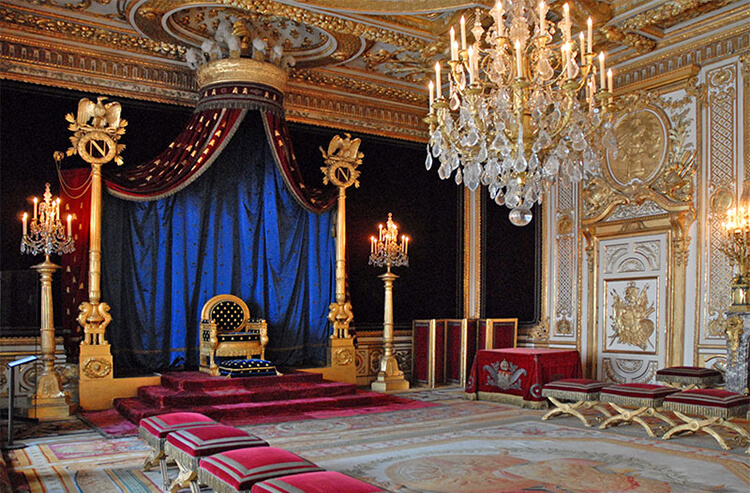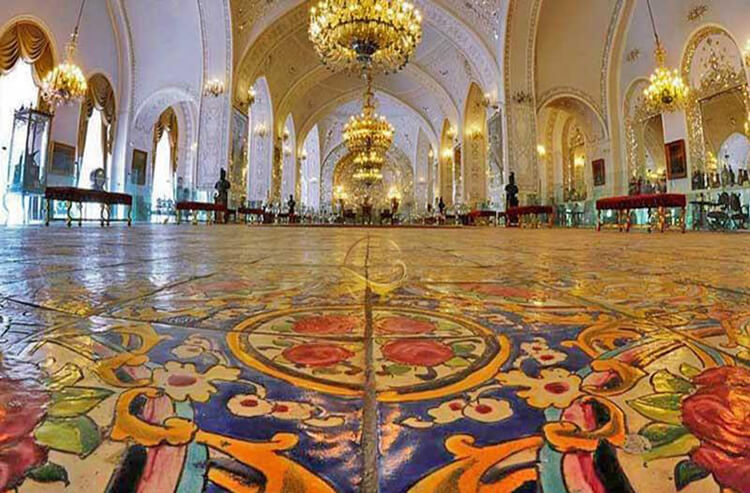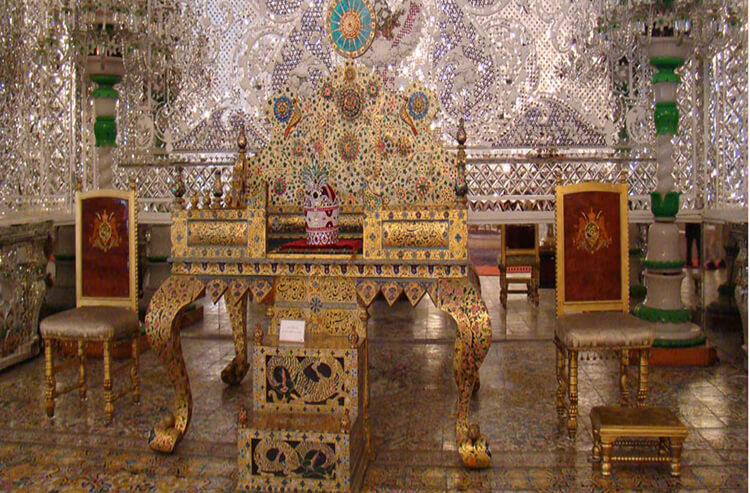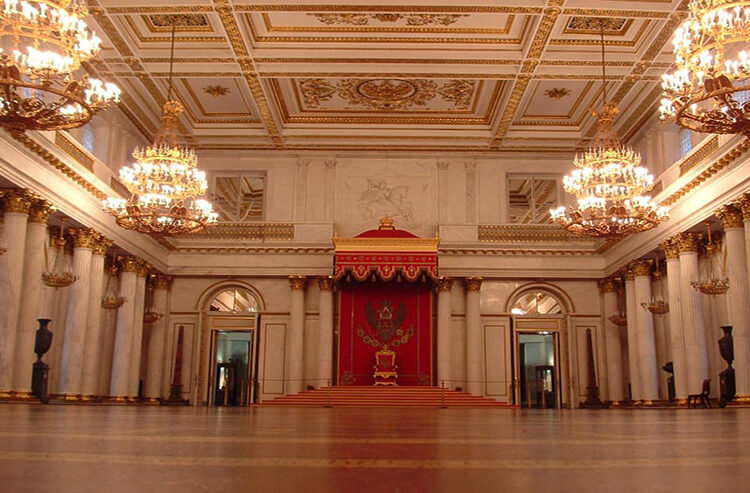Golestan Palace
Golestan Palace Tehran is the former royal residence and the seat of Qajar Dynasty (1789-1925), since Tehran was chosen as the capital. Nevertheless, the establishment of the palace complex goes further back to 16th century during the reign of Shah Tahmasb I of Safavid Dynasty, while during the Qajar era, Golestan Palace underwent major renovations and changes.
Golestan Palatial Complex counts as one of the major Tehran attractions, as the site is steeped in rich history and Persian art and architecture.
Golestan Palace Complex consists of 17 palaces, museums and halls. Almost all of this complex was built during 200 years of Qajar kings ruled. These palaces were used for many different occasions such as coronation and other important celebrations.
Some important parts of Golestan palace:
Takht-e Marmar
Takht-e Marmar Terrace (Marble Throne Verandah) is the first fascinating structure you’ll see as you walk in the courtyard. The terrace is decorated with Iranian elements such as tile work, mirror, stucco, lattice windows, and paintings. The fine marble throne in the terrace is made of the famous yellow marble of Yazd Province.
Khalvat Karim Khani
The building, dating from 1759, was part of the inner residency of Karim Khan Zand. The basic structure of Khalvat-e-Karim Khani resembles Takht-e-Marmar. Like the latter, it is a terrace (Ivan). In the terrace is a small marmorthron. The structure is much smaller than Takht-e-Marmar and it has much less ornamentation. There was once a small pond with a fountain in the middle of this terrace. Water from an underground stream (the king's Qanat) flowed from the well into the pond and was later used to irrigate the palace grounds.
Pond House (Howz Khaneh)
The works of European painters presented to the Qajar Court are housed in the Howz Khaneh.
The Hoze Khaneh was used as a summer chamber during the Qajar ear. A special cooling system pumped water forms an underground system of streams (qanats) - in this case the king qanat - into small ponds in the chambers. Hose means pond, so the name hose Khaneh. The system was designed to allow for as many summer rooms as needed. The water was then led outside to irrigate the royal gardens. Due to the harmful effects of moisture, this system is no longer used.
Brilliant Hall (Talar e Brelian)
Talar-e Berelian (Hall of Brilliance) was so named because it is celebrated by the brilliant mirror work of Iranian craftsmen. The hall was built by Nasser-ol-Din Shah to replace another hall called Talar Bolour (Crystal Hall). Built by Fath Ali Shah, the Bolour Hall had disappeared from the moisture. The Berelian Hall is famous for its mirror work and chandeliers. An oil painting by Yahya Khan Sanie-ol-Molk Ghafari, shows the decorations of this hall performed before the renovation of Mozafar-ol-Din Shah (r. 1896-1907). Exists at Golestan Palace.
Museum of Gifts
This building is located under the Salam Hall. It is a part of the first Iranian museum, which was built by Mohammad Ebrahim Khan Memar Bashi.
Under the reign of Nasser ed Din Shah, this building was used as a warehouse for the chinaware and silverware which was dedicated to Qajar kings.
By time of the Pahlavi dynasty, this warehouse was turned into a museum to expose the rare gifts which were given to the Qajar kings.
Today, in addition to the gifts, some rare objects are kept at this museum, including:
Helmet of king Ismail I
Bow and arrows of King Nader
Armband of Fath Ali Shah
The collection of Qajar Seals
Agha Mohammad Khan's crown
Containers Hall (Talar e Zoruf)
This building replaced the building of Narenjestan in the north of the Ivory Hall (Talar e Adj). All the chinaware that were dedicated to Qajar kings by the European kings were taken to this room and were arranged in show cases which were built for this purpose.
Among the chinaware in this hall, these are the most exceptional:
The chinaware that shows the Napoleonic Wars, dedicated by Napoleon Bonaparte.
The chinaware dedicated by Nicholas I of Russia.
The chinaware studded with gems and jewels, dedicated by Queen Victoria.
The chinaware dedicated by Wilhelm II to the Iranian crown prince.
A set made by malachite stone, dedicated by Alexander III of Russia.
Talar Adj(Hall of Ivory)
Is a large hall used as a dining room. It was decorated with gifts presented to Nasser-ol-Din Shah by European monarchs.
Space is used in the summer and usually has an octagon shape. Mahmoud Khan Molk Al-Shoara's watercolor paintings from the Outside hall layout mounted in this section.
Talar Aineh
Talar-e Aineh (Hall of Mirrors) is the most famous of the Palace hall. This relatively small hall is famous for its extraordinary mirror work. The Hall was designed by Haj Abdoul Hossein Memar bashi (Sanie-ol-Molk).Yahaya Khan Moetamed-ol-Molk,the Minister of Architecture,acted as consultant to the designer.
Salam Hall or Museum Room
This section of the hall created a museum with the aim of creating a museum and called the museum room. It was built on the orders of Nasir al-Din Shah and imitated from European museums. Hereafter, the museum room, also known as the Salam Hall. Because of the Salam of the ceremony held there.
Building of Wind catchers (Emarat Badgir)
Emarat Badgir (Tower of Wind Towers) was built during the reign of Fath Ali Shah (around 1806). The building was subjected to major renovations, including structural changes, during the reign of Nasser-ol-Din Shah. A watercolor rendering by Mahmood Khan Malek-ol-Shoara shows the original structure before renovations.
The building is flanked by two rooms, known as Goshvar (earrings). There is a central room with the finest glass window in the Golestan Palace. Outside there are four windtowers of blue, yellow and black glazed tiles and a golden dome. The windtowers are designed to allow the cooling wind to move through the structure.
Talar Almas
Talar Almas (Hall of Diamonds) is located in the southern wing of the Golestan Palace next to the Badgir Building. It is called Hall of Diamonds because of the extraordinary reflection inside the building.
The construction of this hall dates from the time of Fath Ali Shah (circa 1806). Nasser-ol-Din Shah renovated this hall and changed its appearance and replaced the Ogival arches of the hall with Roman. He also ordered the walls covered with wallpapers. As the basic structure dates from the time of Fath Ali Shah, it is only. It is only that this hall should be devoted to the exhibition of art and crafts from this time.
Shams-ol-Emareh (Building of the Sun)
Is the most beautiful structures of the Golestan Palace.
The idea of building a high structure came before his first European and pictorial images of European buildings to Nasser-ol-Din Shah. The monarch wanted a structure from which he could have a panoramic view of the city.
Designed by Moayer-ol-Mamalek, the construction began on the Shams-ol-Emareh in 1865 and was completed two years later. The architect was Master Ali Mohammad Kashi.
The building has two identical towers. The exterior views have several arches, complicated tile work and artistic windows. This building is a fusion of Persian and European architecture.
Abyaze Palace
The Ottoman Sultan Abdul Hamid sent precious gifts to Nasser ed Din Shah, and reportedly, these gifts were copious and enough to fill a castle. The Qajar monarch decided to build an exhibit hall worthy of these gifts within the confines of the Golestan Palace, and eventually the Abyaz Palace was constructed.
It is believed that Nasser ed Din Shah, himself, designed the structure, with a central hall large enough to house the carpet which was sent by Sultan Abd ol Hamid.
Completed in 1883, the Abyaz ("White") Palace now houses one of the most interesting ethological museums in Iran. It includes a colorful exhibition of traditional Iranian costumes, as well as a folk art exhibition.
